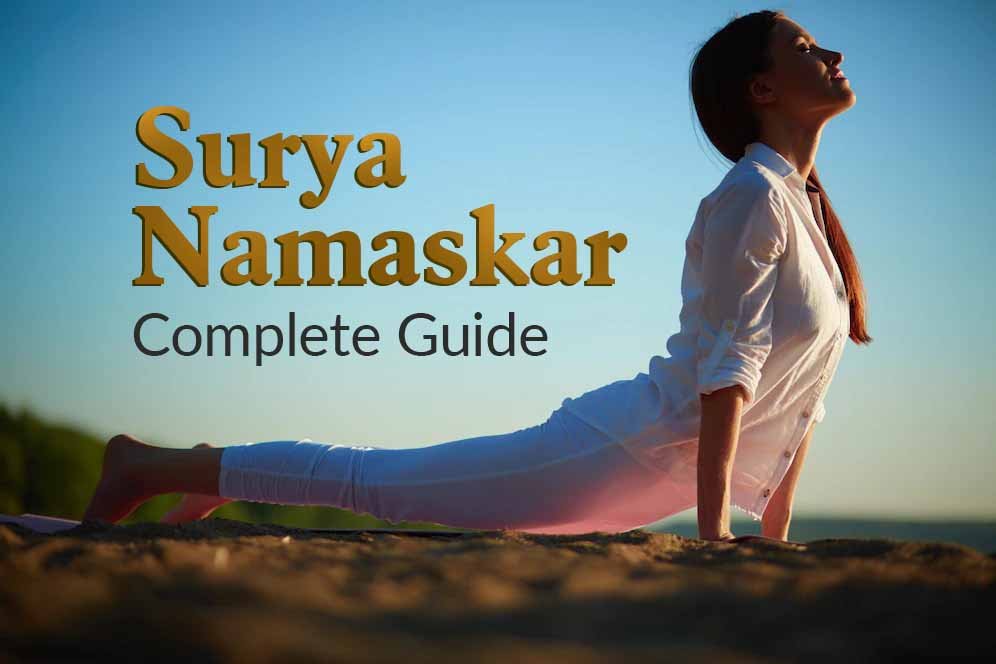Excess belly fat is a red flag for those prioritizing fitness and often jeopardizes health since it is associated with health conditions such as heart problems, type 2 diabetes, high blood pressure and so forth. A protruding belly becomes the most challenging part of the journey when it comes to weight loss. Belly fat is often misconceived to be linked with obesity, but regardless of your body type, underlying abdominal fat is a major concern.
There are mainly two types of fat in the abdomen; subcutaneous fat and visceral fat. The former lies just below the skin while the latter is located deeper in the body, cushioning the abdominal organs and posing health concerns.
Culminating a proper diet, change in lifestyle and adequate physical routines will help ease your fat loss process. This is where Yoga comes in handy, focusing not only on belly fat but also toning the entire body physique. Hidden Mantra is a platform that believes in and promotes Yoga as a self-healing and transformative aid. Practising yoga asanas is a remedy for the mind, body and soul. Read on to explore the various Yoga asanas that will help you churn out that waistline mass.
How yoga can help reduce belly fat
The major causes of belly fat include poor diet, lack of exercise, inadequate sleep, stress and unhealthy drinking or smoking habits. Yoga fosters your weight loss both directly as well as indirectly. Directly, yoga aids in burning out calories and indirectly it promotes an overall sense of well-being. This physical form of exercise has multiple benefits in terms of stress relief, improving mental health, boosting immunity, reducing anxiety, improved sleep and most importantly physical fitness. Multiple Yoga asanas work for belly fat and Hidden Mantra has culminated the prime 8 asanas that have proven best for weight loss.
Yoga Asanas To Reduce Belly Fat
- Tadasana (Mountain pose)
- Surya Namaskar (Sun salutation)
- Padahastasana (Standing Forward Bend)
- Paschimottanasana (Seated Forward Bend)
- Pavanamuktasana (Wind Relieving Pose)
- Naukasana (Boat Pose)
- Ustrasana (Camel Pose)
- Uttanpadasana (Raised Foot Pose)
Tadasana (Mountain pose)
This is a basic posture that appears to be simple but internally works to make the muscles strong and active. This foundational pose engages with the principles of balance and alignment, acting as a stepping stone to other yoga asanas. Ideal for beginners and those intending to start a Yoga routine.
How to do
- Position yourself upright on the mat, arms relaxed at your sides and feet firm on the ground with your big toes touching and heels slightly apart.
- Ensure you have a stable foundation with your toes pressed down.
- Lift your kneecaps, activating the quadriceps to produce a sense of lift in your body.
- Stretch your spine and clench your abs.
- Roll your shoulders backwards bringing your shoulder blades closer and opening up your chest.
- Bring your hands together in front of your chest, with your fingers pointed upwards. Inhale as you lift your arms above your head holding your palms together.
- Lengthen your entire body creating a stretching effect.
- Slowly breathe out as you bring down your hands to the initial position, and relax.
Repeat this sequence several times, focusing on your breath and the sensations in your body. You can hold the final pose for several deep breaths if you wish, before releasing back down to your starting position.
Benefits:
- Aligns your body and improves posture by lengthening your spine, opening up your chest, and engaging the core.
- This pose encourages you to become more aware of your body and how it feels, as you focus on grounding down through your feet and lifting up through your entire body.
- Strengthens your legs, core, and back muscles, improving your overall physical strength and stability.
- Tadasana can improve your balance by training your body to find a stable foundation and maintain good alignment.
Advice:
- Beginners or those with any health conditions can make alterations to the pose to suit your comfort level.
- Always ensure that you listen to your body and make adjustments in case of any discomfort.
Practice this pose, as well as all other yoga asanas on a flat, firm surface. Yoga mats are preferred.
Surya Namaskar (Sun salutation)
This is a sequence of 12 yoga postures that are traditionally performed in the morning to greet the new day and energize the body. It is a full-body workout that can help tone and strengthen your muscles, improve flexibility, and aid in weight loss, including reducing belly fat. This asana is best done early morning on an empty stomach.
- Pranamasana (Prayer pose): Position yourself at the front of your yoga mat. Stand upright holding your hands in the prayer position in front of you. Maintain it at some distance from your body, do not press your hands against your chest.
- Hasta Uttanasana (Raised Arms pose): Inhale and stretch your arms up forming the mountain pose, and firming your core.
- Uttanasana (Standing Forward Bend): Exhale and bend forward as you bring your hands to the floor or below your knee.
- Anjaneyasana (Low Lunge): Inhale and press your hands on the ground. Stretch your left foot backwards with your toes curled under you, and your right knee bent over your ankle.
- Phalakasana (Plank pose): Exhale as you take your right leg behind you similar to your left foot, forming a high plank. Try holding this pose for a few breaths.
- Ashtanga Namaskara (Eight-Limbed Salutation): Slowing touch your knees on the ground, followed by your chest and chin. Maintain your elbows at your sides.
- Bhujangasana (Cobra pose): Breathe in and push yourself into a backbend with the support of your arms.
- Adho Mukha Svanasana (Downward-Facing Dog pose): Breathe out and get back on your toes with your feet behind you and hips up, forming an inverted V-shape. Stretch your arms and legs with your head hanging down.
- Anjaneyasana (Low Lunge): Inhale and step your left foot forward into a lunge position, with your right leg stretched out behind you.
- Uttanasana (Standing Forward Bend): Exhale and return to the forward bend position, with hands firmly on the ground, or below the knee for beginners.
- Hasta Uttanasana (Raised Arms pose): Inhale and stretch your arms to the Tadasana posture.
- Pranamasana (Prayer pose): Exhale and return to your starting position, with your palms pressed together in front of your heart.
Repeat the steps with your right foot to complete one cycle. Increase the number of cycles you perform per day based on your comfort levels.
Read: Surya Namaskara – A Complete Guide
Benefits:
- This cycle of poses is a complete workout, toning your muscles, especially in your arms, legs and core.
- Regular practice of Surya Namaskar is beneficial in boosting metabolism and thus helps in weight loss.
- It also balances hormone levels and ensures all-around well-being.
Advice:
- If you have high blood pressure, you should avoid the full version of Surya Namaskar or practice with caution, as some of the poses involve deep forward bends and inversions.
- Avoid or modify certain poses in Surya Namaskar, particularly those that involve strong abdominal engagement or inversions during pregnancy and menstruation.
- If you have a hernia or are at risk of developing one, you should avoid certain poses that pressure the abdominal wall.
3. Padahastasana (Standing Forward Bend)
A yoga pose that involves folding forward from a standing position, with your hands reaching toward your feet or the ground. This pose helps to stretch and lengthen the hamstrings, calves, and lower back muscles, while also improving digestion, reducing stress, and calming the mind.
How to do:
- Begin by standing in Tadasana (Mountain Pose) with your feet hip-width apart and your arms by your sides.
- Inhale and raise your arms overhead, lengthening your spine.
- Exhale and fold forward from your hips, bending your knees slightly if needed to release any tension in your hamstrings.
- Place your hands on the ground beside your feet or grasp your ankles or calves, depending on your flexibility.
- Inhale and lengthen your spine, reaching the crown of your head forward and keeping your gaze forward or down.
- Exhale and deepen the stretch, allowing your head to release toward the ground.
- Hold the pose for 5-10 deep breaths, or longer if comfortable.
- To release, inhale and slowly rise up, lifting your arms overhead and coming back to Tadasana.
Benefits:
- This asana helps to tone your legs, increasing strength and flexibility.
- Vitalises the abdominal system improving metabolism.
- Ideal for relieving stress and tension, and calming the mind and body.
- It also helps to reduce symptoms of mild depression.
Advice:
- Those with back or spinal disc problems are advised to refrain from doing this asana or modify it to suit their comfort level.
- Also, be mindful to not stretch or force your body beyond your limits.
4. Paschimottanasana (Seated Forward Bend)
This asana involves a deep stretch of the entire back body, including the abdominal muscles, toning these muscles. Paschimottanasana is ideal for those with digestive disorders and is often practised as part of a seated series in yoga practice.
How to do:
- Begin by sitting on the ground with legs stretched out and spine upright.
- Inhale and lift your arms overhead, stretching out your spine.
- Exhale and bend forward, touching your feet or ankles.
- According to your comfort level, try to grab your toes or wrap your fingers around the soles of your feet.
- Inhale and straighten your spine as your lower your head forward and continue looking down or forward.
- Exhale and try to bring your head closer towards your feet.
- Hold the pose for 5-10 deep breaths. With more practice, you can hold longer.
- Inhale and slowly release the posture, lifting your arms overhead and coming back to the initial position.
Benefits:
- Stretches your hamstring and calf muscles, improving mobility and strength
- Helps to improve digestion by stimulating the abdominal system.
- Therapeutic for conditions such as asthma, high blood pressure or sleep disorder.
- Helps to ease gastric issues.
Advice:
- Do not practice this pose if you have back or spine problems.
- In case you have tight hamstrings, be mindful to approach each step slowly, avoiding any sudden jerks that can lead to injury.
- Do not stretch or force your body beyond its limits.
5. Pavanamuktasana (Wind Relieving Pose)
A yoga asana that helps to relieve gas and bloating in the digestive system. It is a gentle pose that can be practised by people of all ages and fitness levels. This asana helps to strengthen the abdominal muscles, including the rectus abdominis and the obliques, which can help to tone and firm the belly area.
How to do:
- Begin by lying on your back with your arms at your sides and your legs extended.
- Inhale and lift your right knee towards your chest.
- Wrap your hands around your right knee and gently pull it closer to your chest, using your arms to hug your knee.
- Hold the pose for a few breaths, feeling a gentle stretch in your lower back and hips.
- Exhale and release your right leg back to the starting position.
- Repeat the pose with your left leg.
- Finally, bring both knees towards your chest and hug them in towards your body.
- Rock gently from side to side, massaging your lower back.
- Hold the pose for a few breaths, and then release.
Repeat this asana 8-10 times with sufficient intervals in between, before resting in Shavasana.
Benefits:
- This asana is beneficial for those facing gastric issues or bloating.
- Helps to improve digestion and stimulates metabolism.
- It strengthens the abdominal muscles, providing support to the digestive system.
- Strengthens your core and abdominal muscles and, in the process, reduces belly fat.
Advice:
- Practice this asana with caution in case you are facing lower back or hip injuries. Modify the posture if necessary.
- Pregnant and menstruating women are advised against practising this asana.
6. Naukasana (Boat Pose)
A yoga asana that is known for its benefits in strengthening the core and abdominal muscles, leading to a flatter belly. A challenging pose that requires sufficient balance and core strength, but can be modified according to one’s level of ability.
How to do:
- Lie flat on your yoga mat, facing upwards with your knees close together and arms relaxed at your sides.
- Place your palms facing the floor.
- Inhale deeply, and as you exhale, lift your head, chest and legs off the ground one at a time.
- Keep your toes pointed and gaze fixed at a point in front of you.
- Maintain the V pose with your tail bones as the base. Stretch out your legs and arms.
- Hold the pose for 5-10 breaths, and slowly increase the duration with practice.
- Exhale as you return to the original position and relax.
- Repeat this a few times.
Benefits:
- Strengthening the core muscles such as abdominal muscles, back muscles, and hip flexors.
- Improving balance and stability
- Toning the legs; including the thighs and calves.
- Stimulates digestion thus promoting weight loss.
Advice:
- It is important that the asana is done with proper posture and alignment to avoid injuries.
- Pregnant and menstruating women are advised against this posture.
- Do not practice this if you have had any recent neck, back or abdominal injuries.
- This asana might worsen chronic digestive issues, such as acid reflux, hernia, or ulcers.
7. Ustrasana (Camel Pose)
Numerous benefits of this pose may be useful to both the body and the mind. Deep stretching of the front of the body awakens and energises the abdominal muscles. A strong core will fasten the process of abdominal toning and belly fat loss. It is important to practice this backbend pose with careful alignment because it may be challenging.
How to do:
- Begin by kneeling on your yoga mat with your thighs parallel to the floor and maintain your legs hip-width apart.
- Place your hands on your lower back such that your fingers face the floor.
- Inhale deeply and maintain a close-knit position for your elbows. As you exhale, gently push your hips forward, and stretch backwards.
- Lift your chest to the ceiling while arching your back, then slip your hands down to your feet.
- Reach for your heel with both hands, right first followed by left.
- If you can’t reach your heels, keep your hands on your lower back or hips.
- Ensure that your knees and feet are hip-width apart, and have not changed position.
- Maintain your gaze at the ceiling if it is comfortable for you.
- Maintain the position for 5–10 deep breaths while breathing steadily and smoothly.
- To leave the position, take a deep breath in and lift your body up by lifting your chest up and moving your hips forward.
- Bring back your hands to your hips.
- Take a few long breaths before repeating this posture.
Benefits:
- Improves posture and helps relax tight muscles.
- Strengthens the muscles in the back and lowers spinal discomfort.
- The posture aids in better digestion and resolves gastric trouble.
- Helps to release stress and lowers anxiety levels.
Advice:
- If you have low blood pressure or any medical conditions that affect blood pressure, such as hypertension, it is important to be cautious when practising this pose as it can cause a sudden drop in blood pressure.
- Avoid this pose if you have any recent or chronic injuries to the neck, back, or knees.
- It is important to avoid forcing the pose beyond what is comfortable for your body and to listen to your body’s limits.
8. Uttanpadasana (Raised Foot Pose)
Uttanpadasana, A yoga asana that can help strengthen the core, improve digestion, and tone the leg muscles. It is a simple pose that can be practised by beginners and advanced practitioners alike.
How to do:
- Lie flat on your back on a yoga mat with your legs extended and your arms resting by your sides.
- Inhale deeply and as you exhale, lift both legs together off the ground to an angle of about 30-45 degrees. Keep your legs straight and your toes pointed towards the ceiling.
- Ensure your lower back remains grounded on the mat, and your shoulders and neck are relaxed.
- Hold the pose for 5-10 deep breaths, keeping your breath smooth and steady.
- Exhale and slowly straighten your legs making a 90 degree with the ground.
- Hold the pose for a few deep breaths, focusing on engaging your core muscles and keeping your legs straight.
- Inhale and slowly lower your legs back down to the ground.
- Repeat the pose a few more times, gradually increasing the duration of the hold and the number of repetitions.
Benefit:
- Improves posture and lower back issues by strengthening the muscles.
- Tones the thigh and calf muscles, strengthening your legs.
- Improves digestion by stimulating the digestive system.
- Lowers stress levels and calms the mind.
Advice:
- Do not practice this posture if you have lower back injuries or discomfort. Modify the posture according to your comfort level.
- Refrain from doing this asana in case you have any blood pressure issues such as hypertension, or low blood pressure.
- Avoid this posture if you have had any recent digestive issues, such as acid reflux, hernia, or ulcers.
Other Benefits of Yoga for Overall Health
Yoga being a mind and body practice has numerous benefits apart from enhancing fitness. The combination of physical postures, breathing techniques, and meditation improves overall health and well-being. The benefits of yoga for overall health include:
- Stress reduction: Yoga is an effective means of curbing stress and workload. It helps you relax those tension points and lead a life of tranquillity.
- Increased energy levels: Yoga boosts your daily energy levels along with improved blood flow and a better functioning body.
- Improved cardiovascular health: By lowering blood pressure, enhancing circulation, and lowering stress, yoga can help improve cardiovascular health.
- Enhanced immune system: Stress reduction and better sleep automatically boosts your immune system, when combined with a balanced diet.
- Better sleep cycles: Yoga helps you complete the required sleep quotient, preventing awakening between cycles. It also works as a remedy for people suffering from insomnia.
Yoga Asanas To Reduce Belly Fat – Conclusion
Incorporating Yoga asanas into your weight loss routine can prove to be extremely beneficial. With the wide range of benefits from improved fitness to promoting mindfulness, Yoga plays a pivotal role in our lifestyle. If you are looking for a solution to burn those excess fat deposits then Yoga is your one-stop solution. Whether you’re a beginner or an experienced yogi, there are a variety of classes and styles to choose from that can be tailored to your individual needs and goals.
Adding yoga to your daily lifestyle can be a fun and effective way to achieve your goals. So, why not give it a try? Get those mats rolling. You may be surprised at how much you enjoy the practice and the benefits it can bring to your life. All said and done, a healthy outside starts from the inside!
👉Read: 5 Benefits of Yoga
👉Read: Yoga For Good Sleep
👉Read: Surya Namaskara / Sun Salutation– A Complete Guide
👉Read: 5 Best Yoga Poses for Flexibility











2 Responses